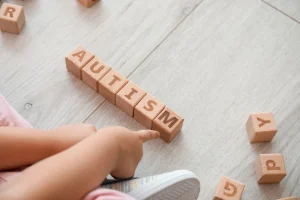Effect of Handwriting on Underachievers and Tips to Improve it
By Prapoorna M
Last Updated: November 26, 2021
Hand writing is the skill practiced since childhood. It has higher benefits like activating the brain because it involves complex motor and high cognitive skills. Writing with hand activates the necessary parts of brain and as the kid memorizes the letters and words while writing, the neurological functioning improves a lot.
As hand writing activates visual perception of letters, fluency is achieved in reading. Better handwriting is pleasing to see, read and understand. It creates great impression on the writer. Good handwriting is a predictor of success. So the earlier the children could master their skills in handwriting, the better their academic growth can be.
Some kids are accounted as underachievers, when their hand writing is so bad. In fact, when the writing is not clear and legible, a reader cannot understand. When neatness is not maintained and the size and shape of the letters written is not so pleasing, a teacher who corrects the paper, tends to reduce the marks, though the matter in their answer sheets is good.
Handwriting in Underachievers
Underachievement may result from poor handwriting. Handwriting
issues involve the following:
Legibility:
Legibility is the quality of being clear enough to read. The legibility is lost when all or most of the words written can’t be read clearly. This greatly affects the performance of the student, whether it is about numbers or words.
Neatness:
The handwriting should be clear and understandable, but not messy or poorly controlled. If the look of that written paper doesn’t look appealing, a reader will never be interested in reading it.

Comfort:
While writing, the child should feel comfortable holding a pen or pencil. He/she should not experience any kind of pain, strain or discomfort while writing. Hence, the way of holding a pen or pencil also affects the handwriting.
Pressure:
The pressure of writing should be proper, which means the student should neither press it too hard nor the other way. It should be “just right” pressure. Such pressure within one piece of writing should not be variable.
Speed:
The student should be fast enough in writing. If the children are really slow in writing, make them practice well. Practice brings confidence and improves their interest by increasing the speed. Fast hand writing could be inaccurate and illegible.
Motivation/enjoyment:
Motivation and enjoyment are the sure things a child should have to learn more. Motivate them to write more and encourage them by praising. Let them enjoy the beauty of writing what they are uttering through words from mouth.
Causes of poor handwriting
There are several factors that may cause or contribute to poor
handwriting. All these factors are to be taken seriously in the
improvement of handwriting.
Poor Eyesight:
Some children who write poorly may have bad eyes. Poor vision can cause headaches that distract a child from the task at hand. Fatigue can also affect a child’s concentration which then results in poor handwriting. If you suspect your child is having trouble with his eyes, it is important to have his vision tested. If your child’s handwriting is poor because he can’t see and is easily fatigued, fitting him with eyeglasses may remedy the problem.
Fine motor skills:
The child may have difficulty making fine movements with the pencil or pen resulting in poor handwriting. There are training centers for making the children improve their motor skills.
Short-term memory:
This makes it difficult to quickly recall words as well as the shapes of the alphabets. Practicing and memorizing are usually done to come out of this problem. Train your ward well enough to be good at memory.
Processing of thoughts:
It is also possible that the child may process thoughts faster than she/he can put them down on paper. This is common in hyper active children. Now make them learn to control their pace and put it in a right way. Taking an expert help can make your child overcome this problem.
Learning style:
The child may be a visual-spatial learner rather than an auditory-sequential learner. This means the child may see the forest but have trouble noticing details about the trees.
ADHD:
Hypersensitivity, inattentiveness and impulsive behavior which are characteristic of ADHD contribute to poor handwriting. The problems of ADD and ADHD can be managed by learning everything about the disorder finding out what techniques would help manage the child’s behavior creating an educational program to fit the child’s needs and exploring the possibility of medication. Successful management of ADD or ADHD requires the support of parents, schools, counselors and medical doctors.

Tips to improve handwriting
- Make sure the child is in the correct environment for writing when at home, i.e. sitting at a table on a chair of the right height, and not lying on the floor, in front of the TV or in bed. Also, see that the lighting in adequate enough for them to concentrate. Most kids tend to lay their back against a wall and avoid enough lighting for comfort. This affects their concentration.
- Make sure the writing tools are suited to the child’s age and capabilities (pencils not too thick or thin, pens not scratchy, etc.) Encouraging him/her to dictate ideas to you and then copy down what you’ve written
- Using finger paint, shaving cream, sand and other materials to help him/her see and feel the shapes of letters and numbers
- Giving plenty of time to write and letting him/her take breaks along
the way - Many children like to do their homework lying on the floor, but don’t let them. They can’t develop good handwriting that way and they can’t present their work in a way that does them justice.
- Good posture is vital for any child, but it is particularly important if your child is left-handed, because people who are left-handed have a tendency to develop a cramped, curled hand position which makes writing very hard work. Sitting properly helps to prevent this. So do your best to provide somewhere where your child can work, even if it’s the end of the kitchen table
- Write in the air. It is a common thing that people with poor and illegible handwriting don’t train the correct muscle groups in their hands, arms, and shoulders that can produce a good handwriting. Make them move their entire arm up to the shoulder to write a letter in air, instead of just drawing a letter by moving the wrist. If they are made to write sentences in the air using finger, this is easily practiced. Such an effort forces you to use the muscle groups in your arm and shoulder that help to improve handwriting and keep it from looking messy or cramped.
- Adjust the shape of the writer’s hand. The pen or pencil they hold should be held between the thumb and index and the (optional) middle fingers. The end of the writing utensil should rest against either the web of your hand or against the knuckle of your index finger.
- Holding your pencil too tightly or loosely (in this position or others) will result in poor handwriting. Hold the pencil in the bottom ⅓ for the best results.
- Practice the basic shapes. A consistent flaw in poor handwriting is irregularity and inconsistency between letters and shapes. All the letters are made out of straight lines and circles or semi-circles, so put in some time drawing these. Fill an entire sheet of paper with parallel vertical lines, and parallel diagonal lines. Take the sheets of ‘o’ shapes as well and repeat the same. When you can consistently make the same line over and over, you are ready to move onto complete letters.
- Write slowly at the start. Concentrate on producing the best shaped handwritten letters. Once you’ve mastered the best looking ones, you can sit back and try to keep your handwriting looking good, while speeding things up a little.
- Try to write at least one paragraph each day; it will help you to improve your handwriting.
- Use lined paper to help keep your writing aligned. Stay on the line where required, by just taking the letters above or below as required by the letter’s shape.
- To make it more interesting, try writing pangrams. Pangrams are short texts which contains all or a part of all letters of the alphabet at least once. They help to correct writing of each letter and find specific mistakes. For example, try: The quick brown fox jumps over the lazy dog. Do it in both capitals and lowercase. This phrase captures every letter in the alphabet. Another similar phrase is “Five boxing wizards jump quickly.”
- While writing, make sure your entire lower hand rests on the table. This helps you to be in control of your arm and make sure the table or the surface you’re writing on is free of vibrations. Purchase and use a pencil grip to gather more complete control of the pencil.
- Keep a page or two written in good hand writing in front of you for inspiration. That should be a model for you. With all these tips, one can master the art of good handwriting.
With the help of parents and teachers, any child can easily come out of the label called underachiever and gain the confidence to win the world. A psychological expert can help you deal with any such problem through counselling sessions.
Book your Free Consultation Today
Parent/Caregiver Info:
Client’s Details:
* Error Message








